Searching for "learning space"
Plan for presentation on social media impact in a “sociology and family” class.
Zuo, Jiping <jzuo@stcloudstate.edu>
“Media, Technology, Market, and Cosmopolitan Communities”
https://kahoot.it
Valentini, C. (2015). Is using social media “good” for the public relations profession? A critical reflection. Public Relations Review, 41(2), 170-177. doi:10.1016/j.pubrev.2014.11.009
http://login.libproxy.stcloudstate.edu/login?qurl=http%3a%2f%2fsearch.ebscohost.com%2flogin.aspx%3fdirect%3dtrue%26db%3dkeh%26AN%3d108299204%26site%3deds-live%26scope%3dsite
http://www.sciencedirect.com/science/article/pii/S0363811114001817
p. 172 there is no doubt that digital technologies and social media have contributed to a major alteration in people’s interpersonal communications and relational practices. Inter- personal communications have substantially altered, at least in Western and developed countries, as a result of the culture of increased connectivity that has emerged from social media’s engineering sociality (van Dijck, 2013 ), which allows anyone to be online and to connect to others. Physical presence is no longer a precondition for interpersonal communication.
The Pew Research Center ( Smith & Duggan, 2013 , October 21) indicates that one in every ten American adults has used an online dating site or mobile dating app to seek a partner, and that in the last eight years the proportion of Americans who say that they met their current partner online has doubled. Another study conducted by the same organization ( Lenhart & Duggan, 2014 , February 11) shows that 25% of married or partnered adults who text, have texted their partner while they were both home together, that 21% of cell-phone owners or internet users in a committed relationship have felt closer to their spouse or partner because of exchanges they had online or via text message. Another 9% of adults have resolved online or by text message an argument with their partner that they were having difficulty resolving person to person ( Lenhart & Duggan, 2014 , February 11). These results indicate that digital technologies are not simply tools that facilitate communications: they have a substantial impact on the way humans interact and relate to one another. In other words, they affect the dynamics of interpersonal relations
the impact of social media on dating patterns (e.g. more like shopping around for a commodity) and dating relations (e.g. more temporary, unstable), along with many positive effects as well
1. Goal: introduce students to” a) social media b) the sociological impact of social media on family and dating issues
2. Learning outcomes: a) at the end of the session, students will have firm grasp of popular versus peer-reviewed (academic resources). b) students will be able allocate sources for information c) students will be able to evaluate [and compile? Zotero] information d) students will be able to discuss the impact of social media in general e) students will be able to discuss and evaluate the impact of social media on family and dating f) at the end of the session, students will understand the concepts of netiquette and privacy (digital citizenship, digital anthropology)
3. Possible q/s for the class:
a) why Tinder, Hinge, etc.?
These are the best pickup lines with the highest success rates, according to dating app Hinge
http://www.businessinsider.com/best-pickup-lines-with-highest-success-rates-according-to-hinge-2015-9
what other social media? Can Instagram, Twitter and FB be counted in this mix?
Is Instagram Flirting Really So Bad?
http://www.askmen.com/dating/dating_advice/social-media-dating-advice.html
b) what is so different in the dating scene? how did social media changed the scene?
“I’ve been surprised at what a real impact Facebook has on romantic relationships,” Galena Rhoades, clinical psychologist at the University of Denver, said in Allison McCann’s BuzzFeed article, How Facebook Ruined Dating (And Breaking Up Too). “And I do think Facebook is playing a bigger role in relationship formation and relationship disillusions.” http://psychcentral.com/blog/archives/2013/05/11/dating-and-the-impact-of-social-media/
c) how do family values change, based on the changes in [online] dating?
d) how does online dating differ across race, gender, sexual orientation, age and cultures
e) privacy, security, surveillance
f) mail brides on steroids? how does online dating apps change dubious practices?
g) does online dating impact marriages? are marriages better or weaker after online dating?
Finkel, et al. (2012).Online Dating: A Critical Analysis From the Perspective of Psychological Science. Psychological Science in the Public Interest. 13(1), pp. 3–66. http://www3.nd.edu/~ghaeffel/OnineDating_Aron.pdf
the authors say “yes” to online dating but “we see substantial opportunities for improving the way online dating is practiced. Some of this improvement can come from closer collaboration between scholars and service providers.”
4. possible collaborations. The topic of online dating, social media in particular, is of interest to specialists from Communication Studies (Usera, Fullick), Anthropology (Bocanete), Nursing (Couch), Gender Studies (Robinson), SCSU Counseling and Psychological Services (Houdet) .
E.g.:
Usera, D. (2014). Online Dating Interactions: A discursive look (Dissertation). Graduate College of The University of Iowa, The University of Iowa. Retrieved from https://www.academia.edu/13255554/Online_Dating_Interactions_A_discursive_look
Fullick, M. (2013). “Gendering” the Self in Online Dating Discourse. Canadian Journal Of Communication, 38(4). Retrieved from http://www.cjc-online.ca/index.php/journal/article/view/2647
Bocanete, A. C. (2013). All-male Mobile Dating Apps and their Users in London… After the Magic Wears Out (Dissertation). DEPARTMENT OF ANTHROPOLOGY, UNIVERSITY COLLEGE LONDON. Retrieved from https://www.academia.edu/12884810/All-male_Mobile_Dating_Apps_and_their_Users_in_London…_After_the_Magic_Wears_Out
Couch, D. (2006). Online dating and mating: the use of the internet to meet sexual partners (Master of Public Health). La Trobe University, Victoria, Australia. Retrieved from https://www.academia.edu/12639192/Online_dating_and_mating_the_use_of_the_internet_to_meet_sexual_partners
Robinson, B. (2015). “Personal Preference” as the New Racism: Gay Desire and Racial Cleansing in Cyberspace. Sociology of Race and Ethnicity, 1(2), 317–330. http://doi.org/10.1177/2332649214546870 http://sre.sagepub.com/content/1/2/317
Houdet, A. (2014, August 11). Online Dating Services and McGill: A Study of Usage and Perception (POLI 311: Techniques of Empirical Rsearch Paper). Mcgill, Montreal, Canada. Retrieved from https://www.academia.edu/7935047/Online_Dating_Services_and_McGill_A_Study_of_Usage_and_Perception
bibliography:
and https://blog.stcloudstate.edu/ims/2014/09/25/online-dating/
Synopsis
UWire and The Guardian have a long list of reports. Academia.edu has also plenty of serious academic research. While UWire and the Guardian are explicitly centered on the Anglo-Saxon world (with one exception of report on Iran), Academia.edu presents a great choice of cases from around the world (different cultures) in mostly serious academic research
The Tinder-Is-Satan Arms Race Heats Up Further http://nymag.com/scienceofus/2015/08/tinder-is-satan-arms-race-heats-up-further.html
The History of Digital Desire, vol. 1: An Introduction http://saq.dukejournals.org/content/110/3/583.short
Stampler, L. (2014). The New Dating Game. Time, 183(6), 40. http://login.libproxy.stcloudstate.edu/login?qurl=http%3a%2f%2fsearch.ebscohost.com%2flogin.aspx%3fdirect%3dtrue%26db%3daph%26AN%3d94317888%26site%3deds-live%26scope%3dsite
Kite, M. (2015). Click and flick: romance is being killed off by the brutal marketplace of dating apps such as Tinder. Spectator, (9729). 12. http://login.libproxy.stcloudstate.edu/login?qurl=http%3a%2f%2fsearch.ebscohost.com%2flogin.aspx%3fdirect%3dtrue%26db%3dedsgao%26AN%3dedsgcl.401492069%26site%3deds-live%26scope%3dsite
Hobson, T. (2015). Tinder feelings: Can mobile dating apps move beyond the promise of a one-night stand?. Spectator, (9740). 22. http://login.libproxy.stcloudstate.edu/login?qurl=http%3a%2f%2fsearch.ebscohost.com%2flogin.aspx%3fdirect%3dtrue%26db%3dedsgao%26AN%3dedsgcl.411742748%26site%3deds-live%26scope%3dsite
(2015). My Tinder date wants to be friends with benefits. I want to be serious. What now? Swipe Right is our advice column that tackles the tricky world of online dating. This week: weighing the benefits of casual liaisonsGet help making your profile work: forward screenshots to askevaguardian@gmail.com for a personal critique and upgrade; Swipe Right is our advice column that tackles the tricky world of online dating. This week: weighing the benefits of casual liaisonsGet help making your profile work: forward screenshots to askevaguardian@gmail.com for a personal critique and upgrade. theguardian.com. http://login.libproxy.stcloudstate.edu/login?qurl=http%3a%2f%2fsearch.ebscohost.com%2flogin.aspx%3fdirect%3dtrue%26db%3dedsgao%26AN%3dedsgcl.409945005%26site%3deds-live%26scope%3dsite
http://www.theguardian.com/lifeandstyle/2015/apr/16/swipe-right-online-dating-friends-with-benefits-relationships
Wood, M. (2015). Led by Tinder, the Mobile Dating Game Surges. The New York Times. p. 8. http://login.libproxy.stcloudstate.edu/login?qurl=http%3a%2f%2fsearch.ebscohost.com%2flogin.aspx%3fdirect%3dtrue%26db%3dedsgao%26AN%3dedsgcl.400230809%26site%3deds-live%26scope%3dsite
http://www.lexisnexis.com/lnacui2api/api/version1/getDocCui?lni=5F7B-R7N1-DXY4-X3K7&csi=6742&hl=t&hv=t&hnsd=f&hns=t&hgn=t&oc=00240&perma=true http://www.nytimes.com/2015/02/05/technology/personaltech/led-by-tinder-the-mobile-dating-game-surges.html
(2015). Tinder hooks up with Instagram to woo new users to the dating app; Dating app overhauls its user profiles with photo app integration, and extended information pulled from Facebook. theguardian.com. http://login.libproxy.stcloudstate.edu/login?qurl=http%3a%2f%2fsearch.ebscohost.com%2flogin.aspx%3fdirect%3dtrue%26db%3dedsgao%26AN%3dedsgcl.409944725%26site%3deds-live%26scope%3dsite
(2015). Brand love in the time of Tinder; Thanks to dating apps such as Tinder, relationships are changing, but does that include the ones we form with brands too?. theguardian.com. http://login.libproxy.stcloudstate.edu/login?qurl=http%3a%2f%2fsearch.ebscohost.com%2flogin.aspx%3fdirect%3dtrue%26db%3dedsgao%26AN%3dedsgcl.409800099%26site%3deds-live%26scope%3dsite
(2015). A look at modern day dating – Tinder and Match.com. UWIRE Text. http://go.galegroup.com/ps/i.do?id=GALE%7CA401448144&v=2.1&u=stcloud_main&it=r&p=PROF&sw=w&asid=4b52e991d97812282b4651b5c2276ca9
ROBBINS, A. (2015). Sex and the (Newly!) Single Girl. Washingtonian Magazine, 50(8), 68.
Serjoie, K. A. (2015). Iranian ‘Tinder’ Seeks to Encourage Marriage But Not Dating. Time.Com, N.PAG. http://login.libproxy.stcloudstate.edu/login?qurl=http%3a%2f%2fsearch.ebscohost.com%2flogin.aspx%3fdirect%3dtrue%26db%3dmih%26AN%3d108327379%26site%3deds-live%26scope%3dsite
Rhodan, M. (2015). Meet Willow, the Dating App That Won’t Judge You By Your Looks. Time.Com, N.PAG. http://login.libproxy.stcloudstate.edu/login?qurl=http%3a%2f%2fsearch.ebscohost.com%2flogin.aspx%3fdirect%3dtrue%26db%3df5h%26AN%3d100947723%26site%3deds-live%26scope%3dsite
Rutkin, A. (2015). Hackers can see your dating pics and chat. New Scientist, 226(3022), 20. http://login.libproxy.stcloudstate.edu/login?qurl=http%3a%2f%2fsearch.ebscohost.com%2flogin.aspx%3fdirect%3dtrue%26db%3dulh%26AN%3d102818153%26site%3deds-live%26scope%3dsite
Grigoriadis, V. (2014). Inside the Hookup Factory. Rolling Stone, (1221), 24-26. http://login.libproxy.stcloudstate.edu/login?qurl=http%3a%2f%2fsearch.ebscohost.com%2flogin.aspx%3fdirect%3dtrue%26db%3daph%26AN%3d98976542%26site%3deds-live%26scope%3dsite
Jamie, N. (2015, July 9). London launch for US dating app that rivals Tinder. Evening Standard. p. 55. http://login.libproxy.stcloudstate.edu/login?qurl=http%3a%2f%2fsearch.ebscohost.com%2flogin.aspx%3fdirect%3dtrue%26db%3dkeh%26AN%3d103711119%26site%3deds-live%26scope%3dsite
Internet and the Male Homosexual Identity: A Critical Reading of the Online Dating Space for Homosexual Men in Bengaluru. (n.d.). Retrieved August 18, 2015, from
https://www.academia.edu/14656772/Internet_and_the_Male_Homosexual_Identity_A_Critical_Reading_of_the_Online_Dating_Space_for_Homosexual_Men_in_Bengaluru
Going Offline: An Exploratory Cultural Artifact Analysis of An Internet Dating Site’s Development Trajectories. (n.d.). Retrieved August 18, 2015, from
https://www.academia.edu/14184813/Going_Offline_An_Exploratory_Cultural_Artifact_Analysis_of_An_Internet_Dating_Site_s_Development_Trajectories
Five Tips for Dating Online. (n.d.). Retrieved August 18, 2015, from
https://www.academia.edu/14078925/Five_Tips_for_Dating_Online
Old and New Methods for Online Research: The Case of Online Dating. (n.d.). Retrieved August 18, 2015, from
https://www.academia.edu/13924873/Old_and_New_Methods_for_Online_Research_The_Case_of_Online_Dating
Remediating the Matchmaker: Arranging Marriage Online in the South Asian Diaspora in America. (n.d.). Retrieved August 18, 2015, from
https://www.academia.edu/13897347/Remediating_the_Matchmaker_Arranging_Marriage_Online_in_the_South_Asian_Diaspora_in_America
Stranger Stranger or Lonely Lonely? Young Chinese and dating apps between the locational, the mobile and the social. (n.d.). Retrieved August 18, 2015, from
https://www.academia.edu/13895551/Stranger_Stranger_or_Lonely_Lonely_Young_Chinese_and_dating_apps_between_the_locational_the_mobile_and_the_social
Roeffen, C. (2014).
Mobile dating: Romance is just a swipe away Tinders’ Romantic and sexual interactions (Bachellor’s Degree). Urbane Technologieen, Netherlands. Retrieved from
https://www.academia.edu/8899473/Mobile_dating_Romance_is_just_a_swipe_away_Tinders_Romantic_and_sexual_interactions
Lemke, R. (2014).
Sexual Liberation on the Internet? Sexual Internet Use of MSM in 50 Different Countries. Mainz: Johannes Gutenberg Universitaet. Retrieved from
https://www.academia.edu/8662454/Sexual_Liberation_on_the_Internet_Sexual_Internet_Use_of_MSM_in_50_Different_Countries
Kogovsek, T., Svab, A., & Kuhar, R. (2011). Intimacy Transformed? : Perceptions of Love, Intimacy and Partnership Among On-line Daters in Slovenia.
Annales,
21(1), 177–186.
https://www.academia.edu/7988186/Intimacy_Transformed_Perceptions_of_Love_Intimacy_and_Partnership_Among_On-line_Daters_in_Slovenia
Cacioppo, J. T., Cacioppo, S., Gonzaga, G. C., Ogburn, E. L., & VanderWeele, T. J. (2013). Marital satisfaction and break-ups differ across on-line and off-line meeting venues.
Proceedings of the National Academy of Sciences,
110(25), 10135–10140.
http://doi.org/10.1073/pnas.1222447110Fullick, M. (2013). “Gendering” the Self in Online Dating Discourse.
Canadian Journal Of Communication, 38(4). Retrieved from
http://www.cjc-online.ca/index.php/journal/article/view/2647
Phillips, J. (n.d.). Online Dating: How Culture Affects Self-Presentation of Match.com Users. Retrieved from
https://www.academia.edu/3845104/Online_Dating_How_Culture_Affects_Self-Presentation_of_Match.com_Users
Chow, E., Coulombe, D., Garcia, V., Vuu, D., & Wade, J. (2009, May 23). Culture, Power, Cyberspace: Age and Gender in Online Dating Websites: An Analysis of User Profiles on Mingles.com. Retrieved from
http://anthrocyber.blogspot.com/2009/05/age-and-gender-in-online-dating.html
Masden, C., & Edwards, W. K. (n.d.). Understanding the Role of Community in Online Dating. In
Proceedings of the 33rd Annual ACM Conference on Human Factors in Computing Systems (pp. 535–544). Seoul, Korea.
http://doi.org/10.1145/2702123.2702417
#MNsummit2015
Main speaker
Aaron Doering
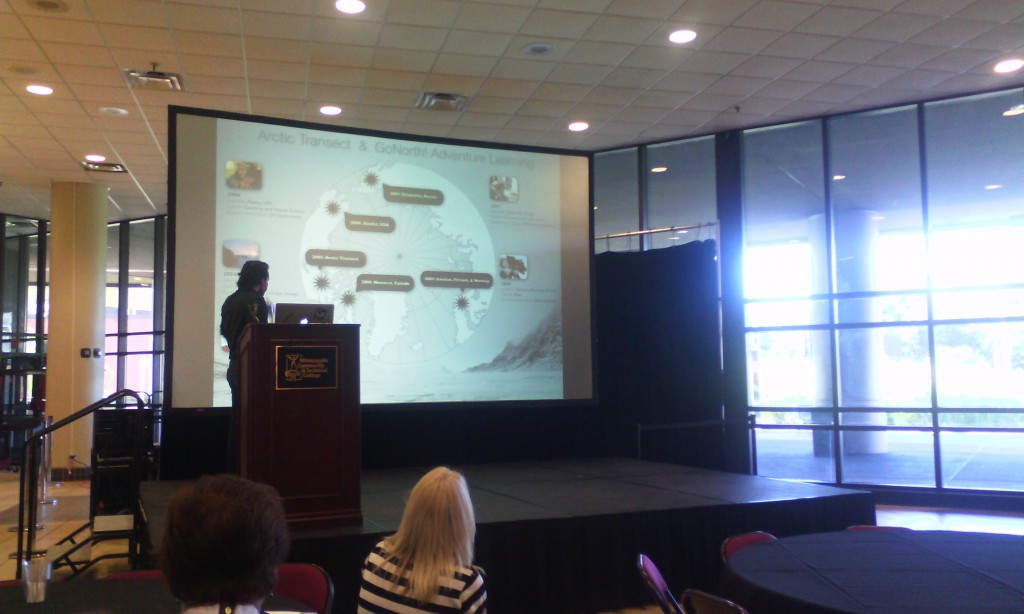
aaron doening
Engagement not completion
Design experience not product
Create change, not simply respond to it
He was a geography teacher : Dimitrina
Experience explore expand. Adventure based how to collaborate in ways we have not collaborated before pedagogical guidelines internet driven
Instructor – content – design
Today: first think is design, content, instructor. So how do we design learning environments is the most important one
Guide learners as designers. Constructivism. Design for meaning. Through the power of the story.
Geotetic design a learning environment learn geography using GIS
Situated movies (student-centered learning)
Grant Earthducation go to the most remote parts of the world to align their education with their culture, instead of what the government is downing as culture
Use of phone: whoever answers instructor’s question first, gets to pose the next question to the rest of the audience.
Design based research
Self-narrative, referencing the experience real world issues in real time
- reference knowledge . knowledge overlap. Technological pedagogical content knowledge.
Geotetic not only how prepare teachers, but desing learning environmwer of the story.
we explore: https://www.we-explore.com/
9.5 design as a learner.
the U Media Lab.
The Changing Earth. App GoX (instagram on steroids. tell their story through the app). How is this different from Google Earth
Raptor Lab (rehabilitate a raptor).
- design experiences
- build trust
- guide learners as designers
- recognize learners as experts
- encourage collaboration
- inspire self narrative
- reference the knowledge domains
- teach for change
- design as learner
adoering@umn.edi chasingseals.com @chasingseals
podcast pontification (audio version of blog self reflections)
Greg Steinke The U
A Digital Story Assignment using WeVideo

WeVideo is the Google response to iMovie cloud
The U is on Google email and thus google drive and all other google tools
The Center for Digital Storytelling. short videos, 3-5 min incorporate photographs with the author narration, reflection
Assignment (verbal directions). process (write a 2 page script, every page is about a minute of video), gather images that support the story; edit the script (rewrite); record audio to the script (use an app on the phone instead of WeVideo), WeVideo can edit the audio recording; edit the story, edit the photos to match the story; YourTube and/or Google+
working with faculty: is the digital story a good fit for your course? two questions: does the course have many writing assignments? does everyone have to do the same type of assignment? do you want to offer choices? do you want your students to share their work outside of the class? to you want to explore opportunities for students to develop 21 century skills?
google communities for sharing
wewideo has a tutorial at Center for Digital Storytelling
students can use the digital story for their eportfolio
the entire exercise is entirely based on mobile devices
time frame: scaffolding options
3d printing products were the tangible result of the project and the digital storytelling just the format to present
Google Drive master folder for the phone images and video; iOS apps: MoviePro, FiLMc Pro, VoiceRecord Pro (including mp3); Android: WeVideo
Storyboard template
Faculty Development Programs: Digital Storytelling Community of Practice
http://it.umn.edu/faculty-development-programs-digital-0
Poster sessions:
Brad Hokanson
http://dha.design.umn.edu/faculty/BHokanson.html
iPAD video kit:

Laurie Conzemius
Critical Thinking

ISTE: http://conference.iste.org/2016/
Joe Lau critical thinking
apps: Popplet blog.popplet.com http://www.popplet.com/ (mindmapping)
into the book: http://reading.ecb.org/
Kahoot – the token system. Polleverywhere https://blog.stcloudstate.edu/ims/2015/05/21/polls-and-surveys-tools-for-education/
Symbaloo https://www.symbaloo.com/home/mix/13eOcK1fiV zotero, easybib, delicious, diigo depending on the grade
youth voices; http://youthvoices.net/ replace social media like teachertube is trying to replace youtube
quandary games in education. https://www.quandarygame.org/ sim city
citizen science alliance http://www.citizensciencealliance.org/
Toontastic https://itunes.apple.com/us/app/toontastic/id404693282?mt=8 now free storytelling
coding and programming: https://www.makewonder.com/robots/dashanddot scratch
Osmo : https://www.playosmo.com/en/ $79.99 + give a set for free Stride principle as a parental involvement
chainlink;
kickword; https://play.google.com/store/apps/details?id=com.makario.wordkick
red herring (four categories) https://play.google.com/store/apps/details?id=com.BlueOxTech.RedHerring&hl=en
http://www.mathplayground.com/logicgames.html
http://www.mathplayground.com/thinkingblocks.html
evaluation:
telestory https://itunes.apple.com/us/app/telestory/id915378506?mt=8
explain everything http://explaineverything.com/
Exploring and Connecting 3D Printing to Teaching and Learning Jason Spartz, Saint Mary’s University of Minnesota
http://pubs.lib.umn.edu/minnesota-elearning-summit/2015/program/23/
http://pubs.lib.umn.edu/cgi/viewcontent.cgi?article=1023&context=minnesota-elearning-summit
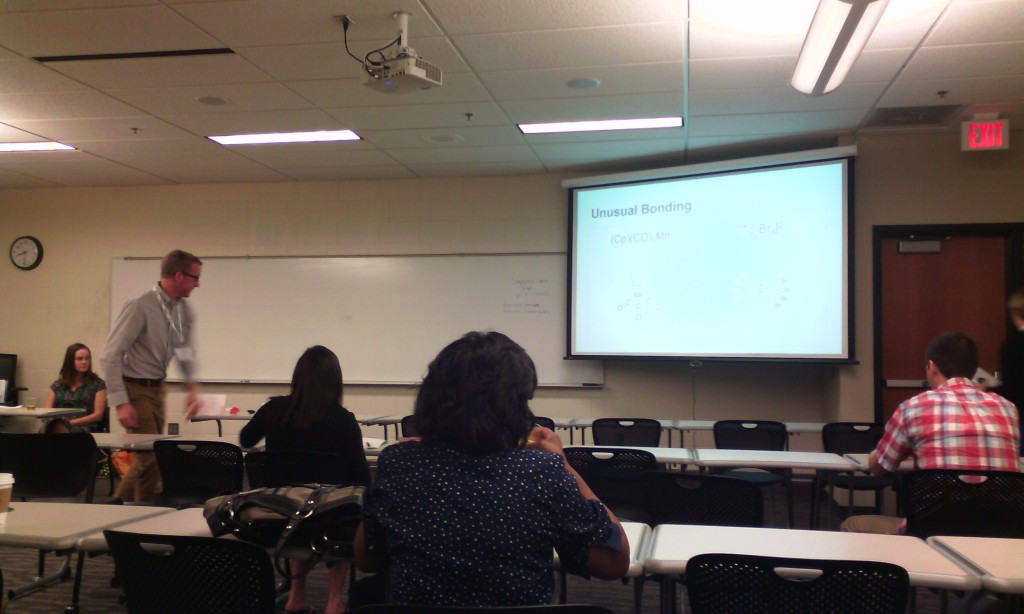
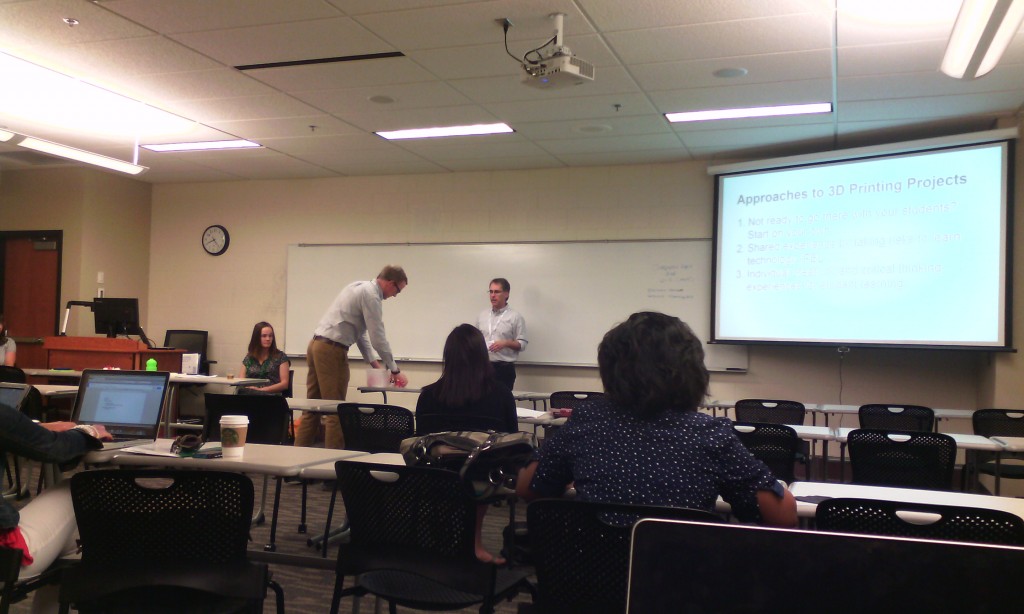
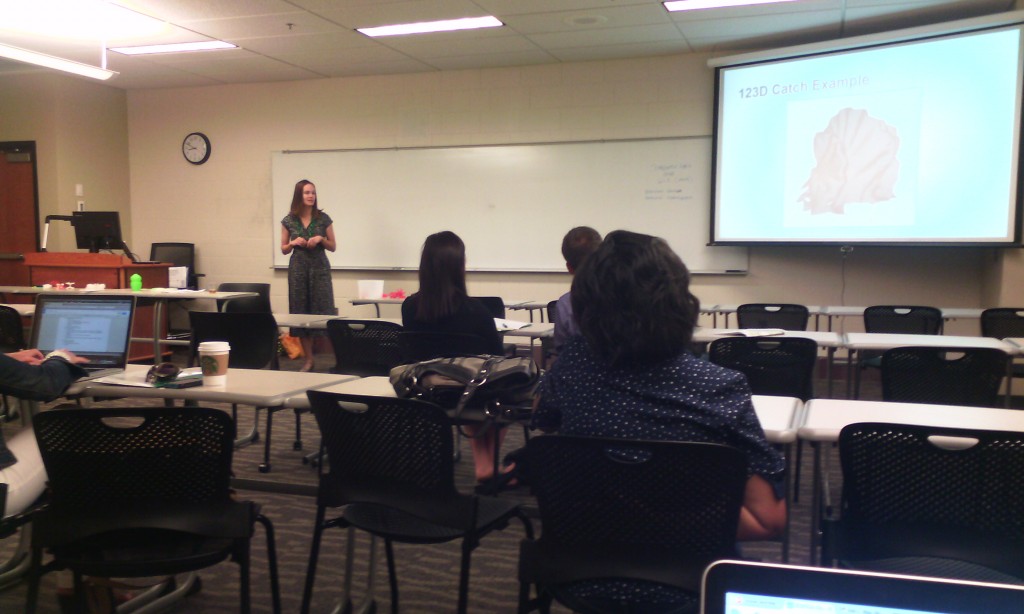
Jason Spartz, Saint Mary’s University of MinnesotaFollow
Lisa Truax, Saint Mary’s University of MinnesotaFollow
Karen Sorvaag, Saint Mary’s University of MinnesotaFollow
Brett Bodsgard, Saint Mary’s University of MinnesotaFollow
chemistry professor. 3D printing with different materials.
what else can be made (e.g. reaction vessel)
printing of atoms
crystalography dbase
Karen: pre-service teachers professor: how to use 3d printers and be comfortable with them. Steve Hoover. Thinkercad and Autodesk123D>
3D academy http://www.team3dacademy.com/index2.html. Pinterest board for3d Printing with resources
Lisa: graphic design. not intuitive. Rhinoceros (not free anymore). 123D strong learning curve. 3d printing will be incorporated in the curriculum. sculpture students and others don’t like fudging on the computer, but Adobe people love it. Some items takes up to 4 hours to print out. when working on the computer is difficult for some students to visualize the dimensionality.
collaborative learning opportunities.
no makerspace or fab lab. additional interest from the theater and business dept. 3d printing is connected to future work skills. new media ecology or media literacy set of skills.
the main presenter: build excitement and interest and gradually step back. how much material goes through and should we charge back. clean and maintenance involved; not too bad. better then a copier. plastic inexpensive. sizes with plastic – $25 and $50. how many project of a spool: depending on the size of the projects but considerable amount. two printers one art dept and one in the faculty dev area.
non profit visually impaired students. how 3d can make difference in special ed.
3d printing lab with access for everybody. ownership brings policy. where housed: neutral place.
only one printer is barely sufficient for faculty to figure out how to use it. purchasing two more if students and curricula to be involved.
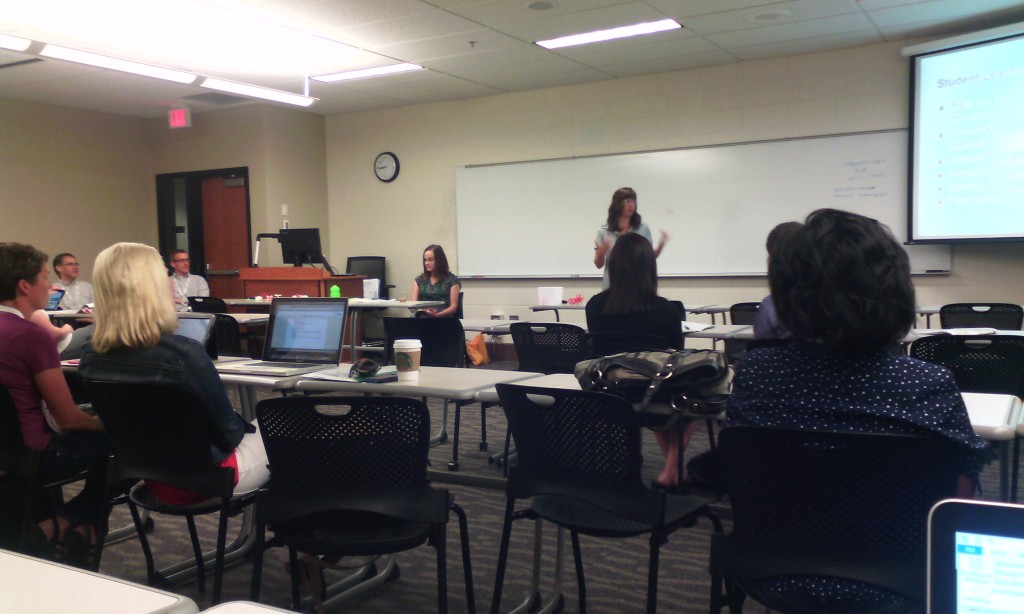



The Balancing Act: Team-Creating an eBook as an Alternative Method for Content Delivery Tom Nechodomu, University of Minnesota

Faculty Created digital stories – google “cultivaitng change series”
student created digital stories –
Susan Andre uses a slide titled “trust” to elucidate how the entire project was enabled. “trust” and “transparency” are sparse currency in the environment I work in. if she is right an ebook ain’t happening anytime soon at my place.
inclining habitat.
students involvement. use stipends. student artists. food for the video interviews. create a community, student centered.
people able to change the book.
copyright process; did you find it cumbersome. copyright permission center.
time span and amount of hours spent: 3-4 months per chapter.
Main speaker
David Wiley. Making Teaching and Learning Awesome with Open
MN Learning Commons
open educational resources
LUMEN
education – sharing feedback, encouragement with students passion about the discipline, yourself
open is not the same as free. free + permissions + copyright permission: 5 r = retain (make and own copies), reuse (use in a wide range of ways), revise (adapt, modify, and improve), remix (combine two or more), redistribute (share with others)
open:
free and unfettered access
perpetual, irrevocable copyright permissions
(look but don’t touch is not open)
tech enables OER permits
traditionally copyright materials on the Internet – not so good ; jet on the road
openly copyright materials on the internet _ yes: jet in the air
permission-less innovation. relatively inexpensive and broad permissions.
intellectual infrastructure of education: learning outcomes/objectives; assessments; textbooks. they are relatively expensive and narrow permissions.
disappearing ink strategies: buyback, rental, ebooks, online subscription
mad, glad, sad, rad: the grumpy cat. student success per dollar
opennetgroup.org/review
change in student learning: replace commercial with open books – small. realign, bigger change. rethink is the large change.
responsibilities:
attribution and meeting other license requirements
thin common cartridge: a way to bring the content to the CMS, but the content remains on the creative commons
disposable assignment: students hate doing them, instructors hate grading them. waste of time and energy
so what?
open education infrastructure: open outcomes, objectives, activities, educational resources
the culture of glued legos must be eradicated. open pedagogy. open credentialing model
summary: don’t settle for “affordable.” improve student outcomes. improve affordability. improve design / academic freedom
links generated from the discussion at my presentation:
Enabling Bring Your Own Device
white paper by the Cisco
To help improve understanding of BYOD and its impacts on modern network environments, this white paper will further explore the many differences that exist between corporate and educational approaches to the technology.
In the education space, dealing with non-standard, user-managed devices has been and still remains the norm. Unfortunately, the variety of devices means a multitude of operating systems and software are encountered, with many “standards” being defined. As a result there is little consistency in the device type or the software being installed. Since the device is owned by the student and is a personal resource, it is often difficult or impossible to enforce a policy that prevents users from installing software. In addition, due to the nature of learning as opposed to a corporate environment, it is also difficult to put a restriction on certain classes of software since all may provide a worthwhile educational purpose.
providing a solution that unifies management and deployment polices across both wired and wireless devices is very desirable.
The Internet of Everything (IoE) has spurred a revolution in mobility. Collaboration anywhere, anytime and with any device is quickly becoming the rule instead of the exception. As a result it is now common for students to bring mobile devices such as smartphones, tablets and e-readers into the academic environment to support their educational endeavors.
The infrastructure supporting BYOD no longer has the sole purpose of providing a wireless radio signal within a given area. The focus is now about providing the appropriate bandwidth and quality to accommodate the ever-growing number of devices and ensure that an application provides a good end-user experience. In a sense, applications are now the major driving force behind the continuing evolution of BYOD. For example, a teacher accessing video in the classroom for educational purposes during class hours should have greater priority than a student in the same area accessing a gaming site for recreation.
A state-of-the-art BYOD infrastructure should now be capable of providing more than just generic, general-purpose wireless connectivity. In the classroom environment, the notion of “differentiated access” often resonates with faculty and staff. Once this has been determined, a policy can be applied to the user and their activity on the network.
Granular security can also be intelligently delivered.
Quality of Service (QoS) rate limiting has been available for some time, but now there are newer QoS techniques available.
Location-based services can provide their first interaction with the university. By delivering campus maps and directional information, location-enabled services can enhance the experience of these visitors and provide a positive image to them as well. As a visitor enters a particular building location, information could automatically be provided. In the case of a visiting student, information about the history of a building, departments contained within the building, or other resources could be presented to enhance a guided tour, or provide the perspective student the ability to have a self-directed tour of the campus facilities.
802.11ac Technology (https://en.wikipedia.org/wiki/IEEE_802.11ac)
Software Defined Networking (https://en.wikipedia.org/wiki/Software-defined_networking)
Digital game-based learning levels up digital literacies
http://thinkspace.csu.edu.au/anotherbyteofknowledge/digital-game-based-learning-levels-up-digital-literacies/
My note: excellent Australian article, which presents a very strong point on digital literacies (metaliteracies, see URL below) from educators (versus library) perspective. Connected with game-based learning, it clearly renders the traditional perspective of information literacy as miniscules and the notion of digital literacy being “information literacy on steroids” as obsolete. It clearly shows that the “xxx-literacies” are clearly not a domain of the librarians and if the librarians do not wised up and allow other faculty who are “not librarians” to equally participate, they might well count with those faculty going on their own (as it is transparent from this article).
connections will be made between digital game-based learning and digital literacies to show that digital game-based learning is a powerful pedagogy that incorporates the elements of digital literacies. Through the adoption of game-based learning, digital literacies can be taught in context. Digital literacies are the skills that connect the learning content (curriculum) and digital games are the platform that these digital literacies can be practised within a meaningful context.
Digital literacies is an umbrella term that includes a combination of literacies – visual literacy, media literacy, collaborative literacy, ICT literacy, information literacy – that are needed to take an active, participatory role in life, now and in the future (Hague & Payton, 2010, p. 2).
Bawden (2008), cites Gilster (1997), who defines digital literacy as “an ability to understand and use information from a variety of digital sources and regard it as literacy in the digital age” (p.18).
Jisc, identify in their Digital Literacy Guide that it is a concept that is contextual and it is not static. Change is imminent as new technologies develop “at breakneck speeds” (Becker, 2011, p. 76), therefore, it can be inferred the digital literacies required to use these new technologies need to be adaptable and flexible to these changes (Haste, 2009).
Cooper, Lockyer & Brown (2013), highlight this plurality by using the term “multiliteracies” which can be understood as synonymous with digital literacies. Cooper et al. (2013), explain multiliteracies is required as a “broader view of literacy” (p. 94), is needed as a result of the diverse range of communications tools, therefore, context is implied. Ng (2012) also highlights this idea that digital literacy is “the multiplicity of literacies associated with the use of digital technologies” (p. 1066). The combination of multiliteracies and technologies would also suggest that multimodality is an important element of digital literacy (McLoughlin, 2011) .
7 elements of digital literacy in their Developing Digital Literacies Guide (2014), which can be seen below.

digital games (Pivec & Pivec, 2011), which can also be called computer games (Whitton, 2011), video games (Turkay, Hoffman, Kinzer, Chantes & Vicari, 2014) or serious games (Arnab et al., 2012) rather than gamification.
Digital game-based learning then is using digital games in the learning environment with the purpose of achieving learning aligned with learning theory.
Cognitive constructivism is a learning theory that game-based learning could be aligned (Orr & McGuinness, 2014; St-Pierre, 2011). This learning theory builds upon the theories of Piaget and Bruner, therefore, an important consideration in the digital game-based classroom would be that choosing games needs to fit the age and level of intellectual development the students are at (St-Pierre, 2011).
A major focus of the socio-constructivist learning theory is that of Vygotsky’s Zone of Proximal Development (St-Pierre, 2011). The learning is designed “just beyond what the learner can do” (Orr & McGuinness, 2014, p. 223) and takes them beyond where their knowledge already exists.
More on digital literacy (metaliteracy) and DGBL in this IMS blog:
https://blog.stcloudstate.edu/ims/2014/11/30/game-based-learning/
https://blog.stcloudstate.edu/ims/?s=gaming
https://blog.stcloudstate.edu/ims/?s=gaming
https://blog.stcloudstate.edu/ims/2015/02/20/digital-literacy-2/
https://blog.stcloudstate.edu/ims/?s=digital+literacy
https://blog.stcloudstate.edu/ims/2014/11/27/reframing-informatioan-literacy-as-a-metaliteracy/
Game-Changing Grading Changes
http://www.techlearning.com/blogentry/9149
Grade the Product AND the Process
With Revision History, I’ve seen students work just two hours on a paper the night before it’s due and others spend considerable time and effort on a paper. Whatever the case may be, I can identify and address what I see in Revision History with a student to help them grow. My note: use wiki or Google Apps to be able to track changes in revision
Use Kaizena for Effective Feedback – Many teachers have discovered the awesome benefits of filming themselves and their lessons, but what about recording feedback? My note: use audio recording for feedback. a more positive place to learn because my students could now hear the intonation and inflection in my voice when I delivered feedback, not have their hearts broken by red ink. They could hear the positivity with which I reviewed their work and provided feedback.
Rethinking How We Grade Group Work
I had students submit group contracts which clearly stated when and where they would meet and who was responsible for completing what, when. This contract was used in our post-project meetings. By having clearly defined tasks and roles, each student was held accountable. Make them be specific. Instead of Tina will do research by Friday get them as close to Tina will find five usable sources for the project and get them to Tom on the shared planning Doc by 3pm Friday.
Remember Revision History? It’s great for group projects because a Revision History is created for every person the Doc is shared with. Revision History can help a teacher see who contributed to group work and when because on any shared item in Google Drive, each individual is assigned their own color and timestamp. We can now better see how much each group member has contributed to an assignment. We can take this into consideration when grading, or, better yet, be proactive and intervene when a group’s shared planning Doc looks like one person is doing all the work
1) After a project, I gave students a Google Form where they could provide anonymous feedback on their peers efforts during the project. The Form also allowed students to grade these efforts using a rubric. I would then average the grades for each individual student and share the anonymous feedback at the post-group meetings. I would give them an opportunity to reflect on the feedback as a group and speak to the fairness of their averaged grade. Through this process we would come to an agreement on an individual grade for the project and a list of takeaways the could use to improve for next time.
7 Things You Should Know About Developments in Instructional Design
http://www.educause.edu/library/resources/7-things-you-should-know-about-developments-instructional-design
Please read the entire EducCause article here: eli7120
discussion of IMS with faculty:
- pedagogical theories
- learning outcome
- design activities
- students’ multimedia assignments, which lead to online resources
- collaboration with other departments for the students projects
- moving the class to online environment (even if kept hybrid)
What is it?
the complexity of the learning environment is turning instructional design into a more dynamic activity, responding to changing educational models and expectations. Flipped classrooms, makerspaces, and competency-based learning are changing how instructors work with students, how students work with course content, and how mastery is verified. Mobile computing, cloud computing, and data-rich repositories have altered ideas about where and how learning takes place.
How does it work?
One consequence of these changes is that designers can find themselves filling a variety of roles. Today’s instructional designer might work with subject-matter experts, coders, graphic designers, and others. Moreover, the work of an instructional designer increasingly continues throughout the duration of a course rather than taking place upfront.
Who’s doing it?
The responsibility for designing instruction traditionally fell to the instructor of a course, and in many cases it continues to do so. Given the expanding role and landscape of technology—as well as the growing body of knowledge about learning and about educational activities and assessments— dedicated instructional designers are increasingly common and often take a stronger role.
Why is it significant?
The focus on student-centered learning, for example, has spurred the creation of complex integrated learning environments that comprise multiple instructional modules. Competency-based learning allows students to progress at their own pace and finish assignments, courses, and degree plans as time and skills permit. Data provided by analytics systems can help instructional designers predict which pedagogical approaches might be most effective and tailor learning experiences accordingly. The use of mobile learning continues to grow, enabling new kinds of learning experiences.
What are the downsides?
Given the range of competencies needed for the position, finding and hiring instructional designers who fit well into particular institutional cultures can be challenging to the extent that instructors hand over greater amounts of the design process to instructional designers, some of those instructors will feel that they are giving up control, which, in some cases, might appear to be simply the latest threat to faculty authority and autonomy. My note: and this is why SCSU Academic Technology is lead by faculty not IT staff.
Where is it going?
In some contexts, instructional designers might work more directly with students, teaching them lifelong learning skills. Students might begin coursework by choosing from a menu of options, creating their own path through content, making choices about learning options, being more hands-on, and selecting best approaches for demonstrating mastery. Educational models that feature adaptive and personalized learning will increasingly be a focus of instructional design. My note: SCSU CETL does not understand instructional design tendencies AT ALL. Instead of grooming faculty to assume the the leadership role and fill out the demand for instructional design, it isolates and downgrades (keeping traditional and old-fashioned) instructional design to basic tasks of technicalities done by IT staff.
What are the implications for teaching and learning?
By helping align educational activities with a growing understanding of the conditions,
tools, and techniques that enable better learning, instructional designers can help higher education take full advantage of new and emerging models of education. Instructional
designers bring a cross-disciplinary approach to their work, showing faculty how learning activities used in particular subject areas might be effective in others. In this way, instructional
designers can cultivate a measure of consistency across courses and disciplines in how educational strategies and techniques are incorporated. Designers can also facilitate the
creation of inclusive learning environments that offer choices to students with varying strengths and preferences.
More on instructional design in this IMS blog:
https://blog.stcloudstate.edu/ims/2014/10/13/instructional-design/
Voice over presentation
Faculty request to lay voice over a presentation with pictures. Solutions:
Windows / PC

ppt voice over
Apple/Mac

voice over PPT on Apple
advantages:
– unfortunately, faculty are way too familiar with PPT. Familiar to the point that they don’t want to try something better.
– FERPA complient
disadvantages:
– too old. PPT is pre-Internet. It does not matter how much Microsoft is trying to adapt it, the concept is old. There is a myriad of cloud-based solutions, which do better job: https://blog.stcloudstate.edu/ims/2013/09/30/the-5-best-free-slideshow-presentation-and-creation-tools-for-teachers/
– too many files, too many variations
– PPT posted in D2L displays in the D2L Viewer. The visuals are there, but the voice is not. In order to hear the voice, students must download the presentation. Faculty must reflect this in the syllabus.
– faculty need to know how to upload on their web space and figure out URL, if PPT is not place in LMS (D2L)- if faculty places PPT in LMS (D2L), then it is behind password; nearly impossible to share (can share only with SCSU and/or MnSCU members.
– faculty must remember to indicate in the syllabus and/or D2L / Content that “in order to hear the voice over, user must download presentation.”

slideshare
advantages:
– it is a “social” app, like LinkedIn and Twitter. Tagged correctly, the presentation is a platform for “same-minded” people to discuss mutual interests.
– excellent for sharing: conferences, MOOCs etc.
– it has discussion group in LinkedIn.
disadvantages:
– voice over presentation: way to cumbersome compared to PPT. Watch their presentation
– by FERPA regulations, if the presentation contains personal data about students, it cannot be shared on SlideShare
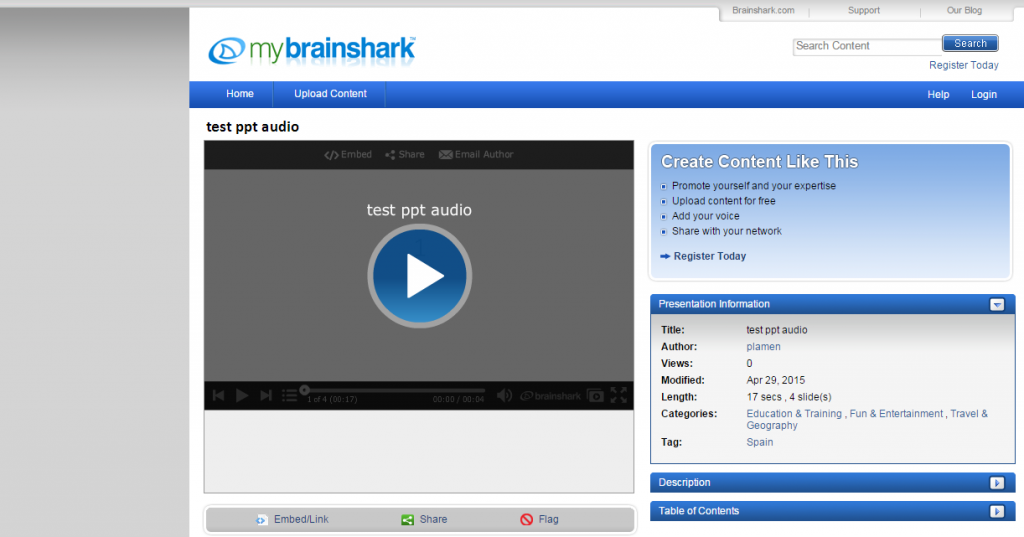
mybrainshaark
advantages:
– it is a “social” app, like LinkedIn and Twitter. Tagged correctly, the presentation is a platform for “same-minded” people to discuss mutual interests.
– excellent for sharing: conferences, MOOCs etc.
– like PPT, very easy upload of pix and voice over. Better the PPT, since it is online and easy to distribute.
– easy to upload PPT and easy to voice over each slide
disadvantages:
– does not embed in D2L (it is D2L issue, not the app), but works perfectly as a link
– faculty must remember to indicate in the syllabus and/or D2L / Content that when clicking on the URL to the PPT, user must simultaneously press “Ctrl” key to open PPT in a separate browser window or tab
– by FERPA regulations, if the presentation contains personal data about students, it cannot be shared on SlideShare

voicethread
advantages:
– consistently voted through last 5 years by K12 educators as great interactive tool.
– video, images, audio and text.
– “constructivist” premiss: teacher and students can exchange asynchronously ideas by using images, video, text and audio.
disadvantages:
– free option has limited features.
– by FERPA regulations, if the presentation contains personal data about students, it cannot be shared on on this site.

mediasite
advantages:
– crude screen capture: faculty can run the PPT manually and narrate over it.
– dirty but fast
– easily shared online (URL ready)
– FERPA compliant
disadvantages:
– students cannot comment (compared to VoiceThread)

- lodestar
advantages:
– free: http://lodestarlearning.com/downloads/lodeStar7.2/en/LodeStar-7.0.exe
– easy to use
– FERPA compliant; endorsed by MnSCU
disadvantages:
– voice over too complex (very much the same as with SlideShare)
advantages:
– FERPA compliant; endorsed by MnSCU
disadvantages:
–
I have not included TechSmit’s Jing https://www.techsmith.com/jing.html, because their video output (Flash file) is obsolete and impossible to convert for free. While it still can be played, shall faculty want to upload the video file on Youtube or similar social media, it will be impossible.
———————————-
Related IMS blog entries:
https://blog.stcloudstate.edu/ims/2014/06/01/social-media-and-presentations-free-image-sources/
https://blog.stcloudstate.edu/ims/2013/09/30/the-5-best-free-slideshow-presentation-and-creation-tools-for-teachers/
5 Essential Insights About Mobile Learning
http://ww2.kqed.org/mindshift/2014/07/15/5-essential-insights-about-mobile-learning/
1. Set goals and expectations for teaching and learning with mobile devices before worrying about the device itself.
St. Vrain Valley School District in Colorado,
Mooresville Graded School District
Consolidated High School District 230
2. Develop a strong community of support for the initiative early and keep up transparent communication with parents and community members throughout the process.
Forsyth County Schools in Georgia.
3. Think about equity, but don’t let it stop forward motion.
includes both urban and rural areas,
4. Evaluate the effectiveness of a mobile learning initiative based on the goals set at the beginning of the rollout.
5. Some of the biggest lessons learned include giving up control and trusting students.
included students in the discussions
STAY NIMBLE
While these mobile learning pioneers have seen some of the pitfalls and can help districts new to the game avoid the same stumbles, this space is changing quickly and every community’s needs will be different.
“It’s no longer just something you implement; it’s evolving and it’s unique in each location,” Bjerede said. “If you try to be cookie cutter about it you won’t meet the needs of every kid in every classroom.”
The technology will change, students will surprise their teachers and the best advice to district leaders is to stay open to all the possibilities and allow students to take control of the tremendous learning opportunity that having a device at all times could offer them.
=====================================
My note: Kathrina Schwartz offers an opinion, which reflects the second wave (withdrawl) in the 3 steps of innovation
The Struggles and Realities of Student-Driven Learning and BYOD
http://ww2.kqed.org/mindshift/2014/07/07/the-struggles-and-realities-of-student-driven-learning-and-byod/
A 2013 Pew study revealed that only 35 percent of teachers at the lowest income schools allow their students to look up information on their mobile devices, as compared to 52 percent of teachers at wealthier schools.
Many advocates of using mobile technologies say the often cited issues of student distraction are just excuses not to try something new.
“The way you discourage it is engage them in the activity so they don’t even think of sending a text. You’ve got to jump in and play their game or you’re going to lose them.”
Angela Crawford has heard all the arguments of BYOD evangelists, but doesn’t see how they match the reality of her classroom. “BYOD is very problematic in many schools, mine included, because we have a prominent engagement problem,” Crawford said.
Tactics to improve engagement like making work relevant to her students’ lives or letting them use their phones in class to look up information, haven’t worked for Crawford, although she’s tried.
When she first started, Crawford was enthusiastic about jumping into collaborative, project-based learning. “I thought my colleagues were monsters because of how they were teaching,” she said of a school where she previously worked and where teachers lectured all the time. She tried to teach students through projects, but found it was a disaster. To her students’ parents, her efforts to make the classroom “student-centered” looked like she wasn’t teaching. “There is a different perception of what a teacher should be in different cultures,” Crawford said. “And in the African-American community in the South the teacher is supposed to do direct instruction.”
“What works best for each student is really the heart of student-centered learning,” Crawford said. “Sometimes what the student needs best is direct instruction. They need that authoritative, in-control figure who is directing their learning and will get them where they need to go.” Many of Crawford’s students come from homes run by single mothers who rule with an iron hand. She tries to replicate that attitude and presence. “They respond to that; they like it,” Crawford said. “It’s comforting to them.”
Still, Crawford will not be experimenting with a bring-your-own-device program. “My problem with education innovation is we tend to want to take a new technology or a new idea and go forth with it as if it’s the silver bullet,” Crawford said. “What happens is that teachers who teach in my type of environment realize this would be a disaster in my classroom.”
Crawford is skeptical that kids in higher income areas aren’t misusing technology too. Her children attend school in a more affluent district and they tell her that kids are constantly messing around on their devices. They just switch screens when a teacher comes by. They get away with it because their teachers trust them to do their work.
“I think kids in middle class or upper middle class schools are equally distracted as low-income students,” said Bob Lenz, director of innovation at Envision Schools, a small charter network that’s part of the deeper learning movement. “It’s just that because of the privilege of their background the content and the skills that they need to gain in school — they’re coming with a lot of those skills already– so it’s not as urgently needed.”
One year or less (2015–2016):
- BYOD
- Cloud computing
- Makerspaces
- Mobile learning
Two to three years (2017–2018):
- 3D printing/rapid prototyping
- Adaptive learning technologies
- Information visualization
- Learning analytics
Four to five years (2019–2020):
- Badges/Microcredit
- Drones
- Visual data analysis
- Wearable technology
The NMC’s interim K–12 Horizon Report can be downloaded for free.
Social Homework Platform Aims to Boost Student Engagement
http://campustechnology.com/articles/2015/02/25/social-homework-platform-aims-to-boost-student-engagement.aspx
Another step ahead/afar from CMS?
Koondis works in traditional large introductory lecture classrooms, blended classes and fully online courses that often are filled with students enrolled from various disciplines who are required to be there for their majors.
Described as a “social homework system,” a “discussion forum that puts students in small groups” and even a replacement for the campus learning management system, Koondis is showing great promise as a pill for student satisfaction.
The idea is that Koondis eliminates the need for teachers to read all of the posts. The program even counts posts for the instructor for grading purposes, and alerts the faculty member to do follow-up when a student isn’t participating.

















